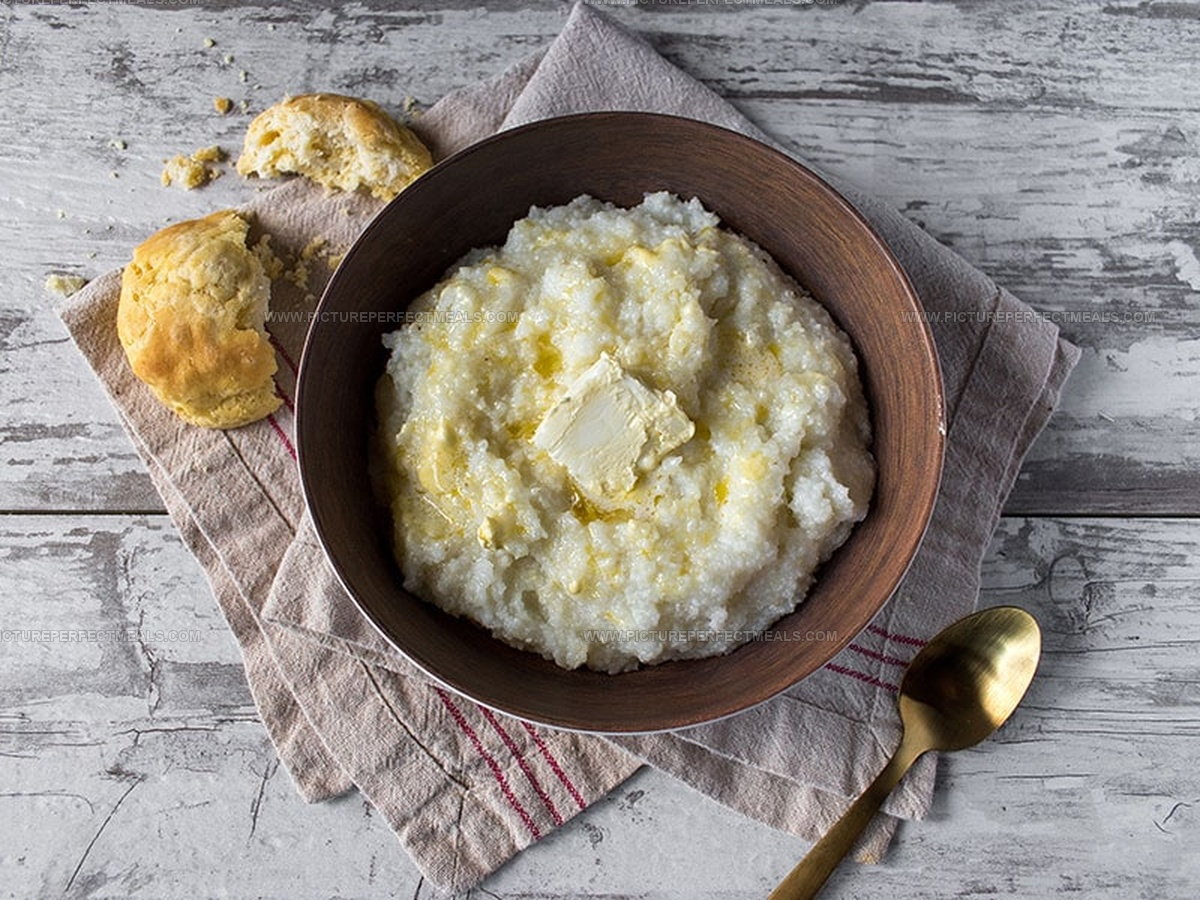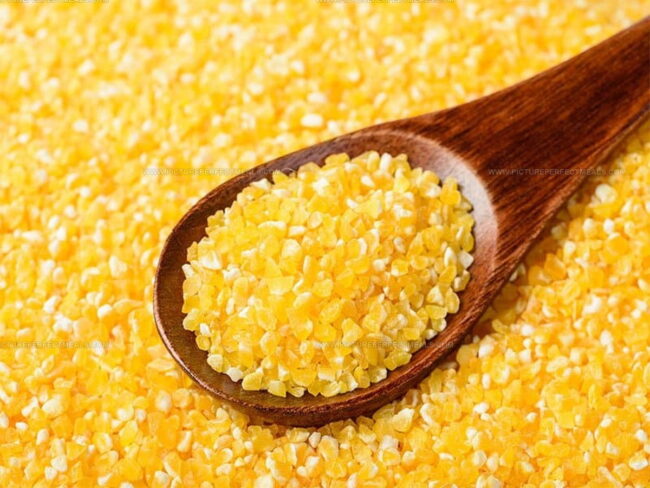What Do Grits Taste Like? Find Out If This Southern Staple Is For You
Southern comfort food enthusiasts often wonder about the mysterious appeal of grits, a staple that sparks curiosity among food lovers nationwide.
These creamy, ground corn kernels have a rich culinary history deeply rooted in American cuisine.
People frequently ask about the flavor profile of this classic dish, seeking to understand its unique texture and taste.
Restaurants across the southern United States proudly feature grits as a breakfast and dinner favorite, intriguing those unfamiliar with its delightful characteristics.
Regional chefs have elevated this simple ingredient into a canvas for incredible culinary creativity.
Different preparation methods can dramatically transform the basic experience of enjoying grits.
By reading further, you'll uncover the delectable secrets behind this beloved southern comfort food and learn why it has captured the hearts of so many food enthusiasts.
What Are Grits?
Grits start with a specific corn type called dent corn, which has less sugar and more starch.
Corn kernels go through a special process where workers soak dried grains in lye solution for many days.
Workers remove the hard outer shell, creating something called hominy.
People can buy hominy in white and yellow corn versions when shopping for grits.
Southern kitchens have long loved grits, but now people across the United States enjoy this dish.
Restaurants serve grits during breakfast and as a main course with many different styles.
Cooks who want grits as a hearty meal need to let them soak through the night or cook slowly until they become smooth and creamy.
Flavor of Grits
Grits often lack strong flavor.
Homemade cornbread comes closest to tasting like grits.
Well-prepared grits have a smooth consistency similar to peanut butter.
Corn processing before cooking removes most natural taste.
Ingredients you mix into grits create more powerful flavor profiles.
Milk, butter, cheese, bacon, and herbs make grits delicious.
People should keep ingredient amounts balanced to avoid overwhelming the dish.
Corn's gentle taste mixes nicely with other ingredients that help make grits satisfying.
People might feel disappointed expecting grits to taste amazing alone.
Plain corn naturally has weak flavor, so cooks season and add extras to boost taste.
Prepared grits still maintain good texture.
Serving grits hot enhances overall eating pleasure.
Professional chefs know cold grits lose appeal quickly.
Chilled grits become less tasty and develop poor texture quickly.
Creamy vs. Cheesy Grits: Flavor Variations
Grits can be made creamy or cheesy, and each version has its own special flavor and texture.
For more bold, savory flavor, cheesy grits bring extra richness and a touch of tang.
Both styles are easy to make and crowd-pleasing:
Creamy Grits
These are soft and smooth, made with butter, milk, or cream for a rich, mellow taste. They’re comforting and simple, perfect as a side for breakfast or dinner.
Cheesy Grits
Packed with flavor, these grits have melted cheese (like cheddar) stirred in. The cheese adds a salty, tangy bite and makes the grits thicker and extra satisfying.
Grits vs. Polenta Differences
Corn-based dishes like grits and polenta might seem similar, but they have key differences.
Yellow corn goes into polenta, while white corn or hominy creates grits.
Polenta feels rougher and chunkier, whereas grits turn out smoother and silkier when cooked.
Grits soak up whatever liquid cooks them, like chicken broth, and take on those flavors completely.
Polenta has its own strong taste, so it blends with other flavors but doesn't absorb them as deeply as grits do.
Are Grits and Cornmeal the Same?
Cornmeal comes from dried corn that people crush into powder.
Sizes range from rough to smooth, but the base stays basic.
Grits start with hominy instead of plain corn and look like rough cornmeal powder.
Grits lack strong taste compared to cornbread.
Some food experts say grits seem similar to cornbread but with less flavor punch.
People can boost taste by adding butter or herbs.
While not as bold as cornbread, grits still taste good.
Soft, smooth texture makes them special.
Cooks have many methods to make grits more interesting.
Types of Grits Explained
Southern cooks know their grits matter.
Different types of grits bring unique flavors and textures to your breakfast plate:
Stone-Ground Grits Type
Stone-ground grits come from whole dried corn kernels crushed carefully between two stones in a grist mill.
These grits offer a heartier texture with deeper corn taste, matching classic grit styles from earlier times.
Quick Or Regular Grits Type
Quick grits differ from regular grits based on how finely they are ground.
Smaller pieces make quick grits cook faster.
Regular grits need more time in the kitchen because their chunks stay larger.
Quick versions break down into smaller bits during processing, which shortens cooking time to about 5 minutes.
Standard grits require around 10 minutes of simmering to reach the right texture and softness.
Instant Grits Type
Hot water works well for instant grits, similar to instant oatmeal.
These quick grits lack the rich taste found in other cooking methods.
Hominy Grits Type
Corn kernels soak in water until their outer layers come off easily.
Workers then dry and grind these processed kernels into small pieces called hominy grits.
Can You Find Grits Outside the US?
Most people around the world don't know much about grits.
Some might have heard about this food because it's popular in the United States, but people outside that country rarely eat it.
Similar dishes like polenta and oatmeal are well-known across different regions.
Key differences exist between grits and other similar foods based on how and when they're served.
Grits show up on American tables for both breakfast and dinner, while oatmeal (called porridge in the United Kingdom) typically appears only during morning meals in Europe and other places.
Grits welcome both sweet and savory flavor combinations.
Oatmeal stays mostly limited to breakfast times, which sets it apart from grits.
How to Cook Grits
Southern kitchens often feature grits as a favorite food that works for any meal.
People can enjoy these simple corn kernels with just butter and salt or make them more interesting with extra ingredients.
Cooking grits takes some patience.
Boil water several times more than needed, add salt, and stir while cooking for about 45 minutes.
Cooks can simmer grits in water, chicken stock, or milk until they become thick and smooth.
These corn kernels have a mild taste, so chefs mix in tasty additions like butter, cream, and cheese.
Southern restaurants often serve shrimp mixed with grits for a hearty meal.
Grits do not have one single flavor profile.
People can create many different versions by adding various ingredients.
Some folks prefer savory styles while others enjoy sweet takes on this classic dish.
Personal taste determines how someone prepares and serves their grits!
What Ingredients Are in Grits?
Grits welcome many tasty ingredients that make them delicious.
Salt and butter create a smooth base with rich flavor.
Mixing different items helps make grits more exciting.
Some yummy additions could include smoky gouda cheese, crispy bacon strips, creamy blue cheese, or sweet maple syrup.
Corn serves as grits' main building block, and flavor depends on what people mix in.
Classic favorites include butter, bacon, blue cheese, and cheddar cheese.
People who want something different might try roasted garlic, maple syrup, or even chickpeas.
Spices can also bring extra excitement to this comforting dish.
Mixing ingredients lets you play with tastes and create something special.




Jenna Hartley
Founder & Recipe Creator
Expertise
Education
Box Hill Institute, Melbourne
William Angliss Institute, Melbourne
Jenna is the heart of Picture Perfect Meals, turning simple ingredients into beautiful, easy‑to‑make dishes.
Growing up around family meals in Melbourne, she trained at Box Hill Institute and then perfected her pastry skills at William Angliss Institute. She loves mixing classic Australian flavors with fresh ideas to keep cooking fun and stress‑free.